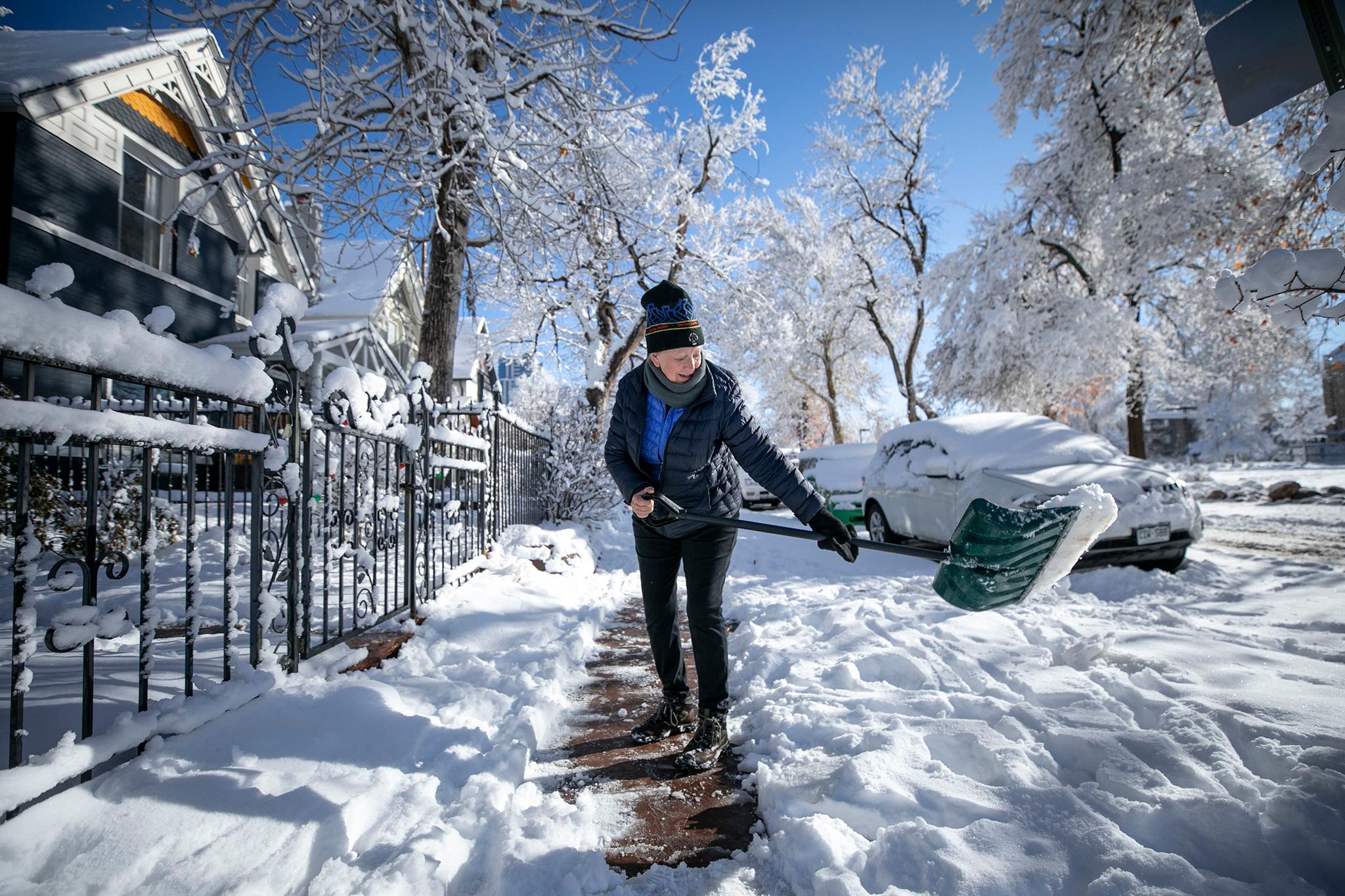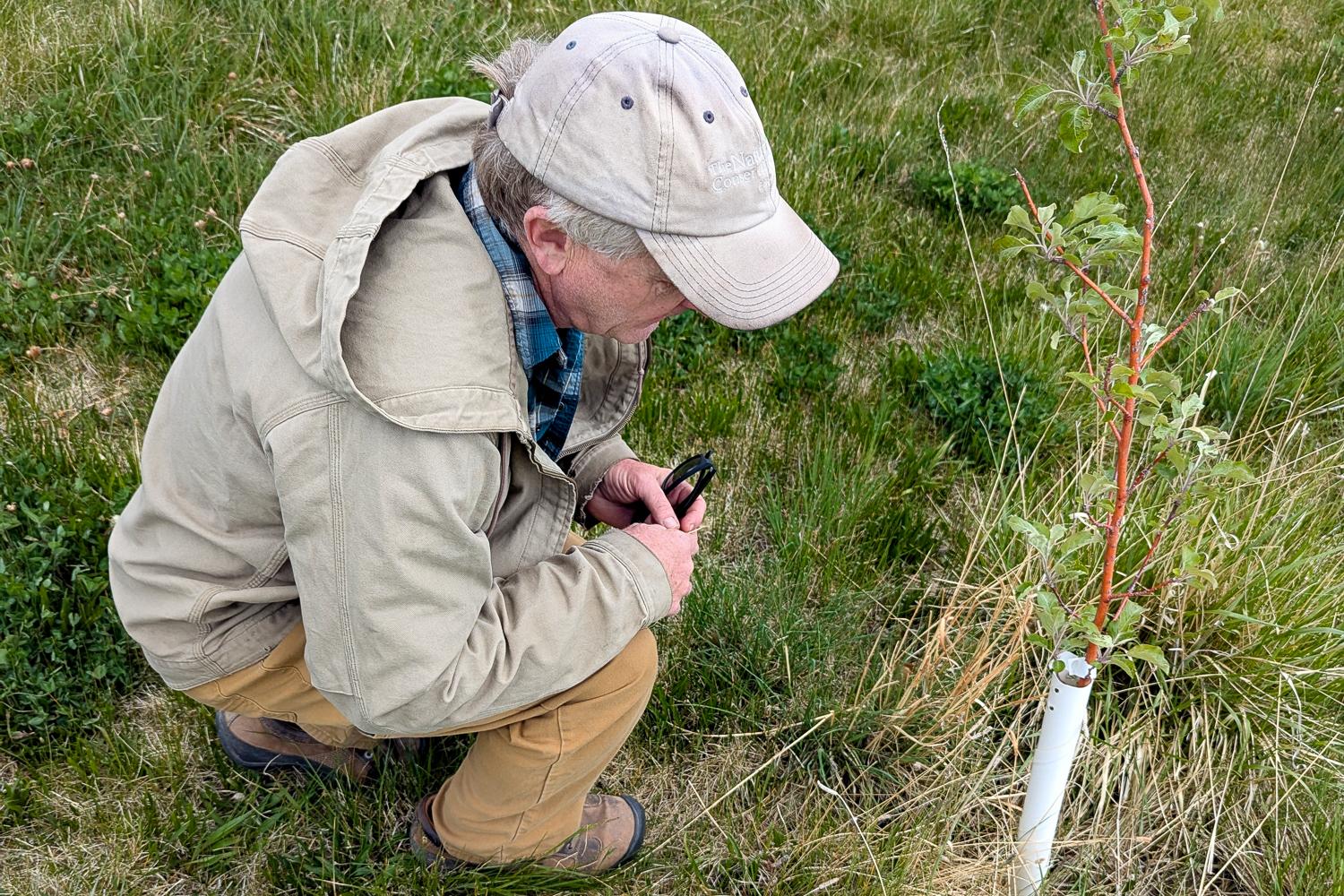
When you think of Colorado, apples probably aren’t the first thing that pops into your head. Yet in the 1800s, this mountainous state was one of the largest apple producers in the country.
At the time, about 1,400 varieties were grown throughout America. And well over 400 of them could be found from the Front Range to Grand Junction. However, grocery stores today likely only carry a handful of apple varieties. And they are almost always the same, no matter where you are located. In other words, Coloradans are missing out on a huge diversity of fruit. Now, a new crop of farmers, cidermakers and enthusiasts are trying to save varieties long lost to time.
“Winter and summer apples are mostly what went extinct over the last 100 years,” said Jude Schuenemeyer, co-director of the Montezuma Orchard Restoration Project in Montezuma County. He said most apples found in grocery stores today are meant to ripen and be picked in the fall. But in the past, orchardists would have grown apples meant to be harvested in the summer, fall and winter. And those winter varieties would have been stored for months before they were consumed.
“We forgot them,” Schuenemeyer said.“We forgot how valuable they were.”
But despite apples being an integral part of Colorado’s agricultural history for generations, the industry was largely decimated by the early 1900s due to the codling moth (a pest that was introduced to North America a couple hundred years ago). Industrialization, prohibition, and a myriad of other factors also contributed to their demise. And for decades, many abandoned orchards sat unattended. Yet, in many cases, they still produced fruit and spread their seeds.
Now, for the people trying to save them, these once-forgotten heirloom apples present an opportunity to help grow local economies and preserve farmland.
But first, how do people find and revive heirlooms?
“These old orchards have just been sitting there, waiting, making crops, doing what apple trees do, and not asking for a whole lot in return,” Schuenemeyer said. “They are gold mines that have been sitting and waiting to be realized.”
At the Montezuma Orchard Project, Schuenemeyer and his wife have been working for over a decade to revive heirloom apples. They are far from the only people doing this kind of work: There’s a large network of people around the country (and the world for that matter) who scour old records and other historical documents to try to figure out where certain apple trees might be located. Or apple hunting can be exactly what it sounds like — where people drive or hike around to see what they can find.
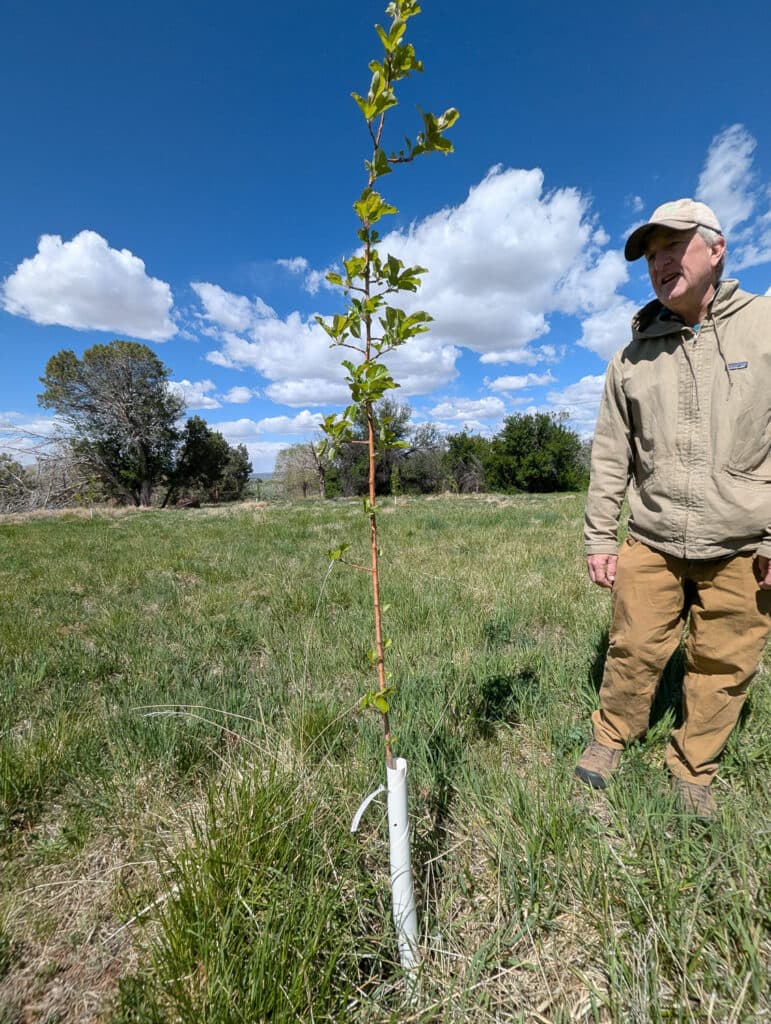
Once a potentially interesting tree has been identified, it needs DNA testing and comparison to old illustrations, models, and descriptions to hopefully prove that it’s the apple someone thinks it is. In other words, it takes countless hours. It’s also important to note that apples don’t produce true to seed. So to reproduce the trees as they are, one has to take cuttings of branches — scions — that need to be grafted onto rootstock.
Yet despite all the effort, “for us to be part of that process at all blows us away,” Schuenemeyer said.
‘Going back in history’ to find fruit
Those scions can then be purchased by fruit farmers.
Alongside growing better-known varieties like Honeycrisp, fourth-generation Colorado fruit farmer Steve Ela, of Ela Family Farms in Hotchkiss, also plants Northern Spy, Macoun, Jonathan, Ashmead’s Kernel, and dozens of others you likely won’t find in regular grocery stores.
“We like to encourage Colorado’s food culture,” Ela said. “We are supporting our local community. We have the freshest fruit. Sometimes it’s picked the day before it goes to market.” He goes on to explain that many of the apples found in supermarkets often aren’t picked at the apple’s optimal time and sit in storage for months before hitting the shelves.
Alongside giving consumers a chance to bite into a Macoun when it’s at peak freshness, farmers like Ela are offering something unique.
“With these apples, farmers have the opportunity to sell something nobody else has,” said Schuenemeyer. “It gives consumers the chance to buy something with a story and that’s connected to Colorado history. And consumers want to buy a story, right?
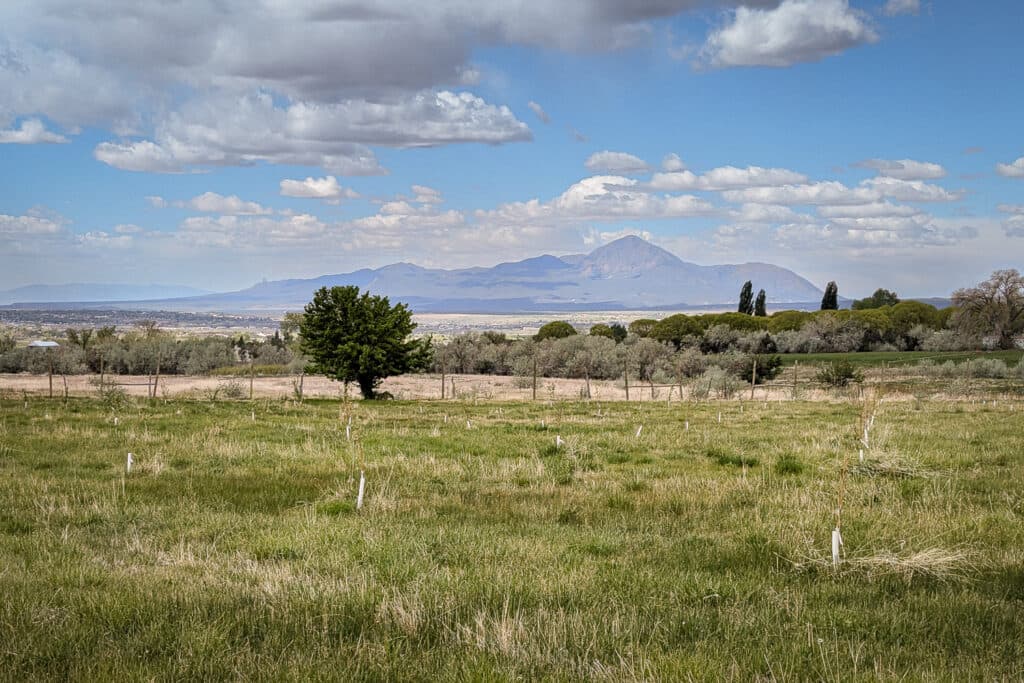
“Small farmers will never be able to grow most of the apples found in the supermarket because many of their genetics are tied up in licensing,” Ela said. “As a small grower in Colorado, we will never have the money to access the germplasm (an apple’s genetic material like seeds, scions, and more) for newer or many widely-grown apples, which is why we have gone backwards and looked at some of the heirloom varieties that grow well here and have great flavors.”
While planting an orchard certainly comes with startup costs, heirlooms at least give potential growers access to apples.
“You don’t need a high-density orchard with an enormous amount of infrastructure to get going,” said Schuenemeyer.
Plus, as Schuenemeyer and Ela note, many of these trees have already proven they can grow, survive, and thrive in Colorado’s often unpredictable climate.
“Our cold nights and warm days create wonderful growing conditions for very flavorful apples. But we're not going to be the cheapest on the market. We have more frost. We have more losses. There’s a lot more labor involved. But in the end, we can produce a high-quality piece of fruit,” Ela said.
Creating the market
Of course, local farmer’s markets can only go so far when it comes to creating a demand for a product. And, the apple industry in Colorado is still quite small. According to one 2018 study by Montezuma, it makes up 0.2 percent of Colorado’s agricultural economy. But there’s another avenue for these apples aside from farmer’s markets and grocery stores: Cider.
While cider is still a relatively small slice of the American alcohol industry, it represented a $806.7 million market from the middle of 2023 to the middle of 2024, up 3.4 percent from the year previous. And that growth was largely driven by small, local brands.
Around 11 years ago, the Schuenemeyers got the idea to apply for a loan for a mobile cider press.
“It’s a tremendous resource,” said Schuenemeyer. “Nearly 50,000 bushels of apples were hitting the ground and going unused.” For those keeping track, a bushel contains around 42 pounds or 120 apples. That means approximately 2.1 million pounds or 6 million apples were going to waste annually.
“With the press, we can create a value-added product, which is so important to preserving these old trees,” Schuenemeyer said. “We have the greatest collection of old apple trees in the U.S. here in Montezuma County. There's no resource like it anywhere else. But to preserve that, you've got to do something with the crop. Love is not enough to keep the trees going. And people enjoying the stories isn't enough to plant the next generation of 100-year-old trees. We have to have an economy for it.”
In turn, once the juice is pasteurized (which the Schuenemeyers do) it can then be sold at farmer’s markets or to cidermakers.
Of course, Montezuma County is not the only one with historical apple trees. You’ll also find them throughout the Front Range.
Cidermaker Dan Haykin has discovered many of them make spectacular cider.
Haykin and his wife, Talia, started Haykin Family Cider in Aurora back in 2018. At the time, “I didn't have access to really great apples,” he said. “So I started foraging. I started looking on the side of the road, on hiking trails, and in parks. I found amazing heirloom apples everywhere, but nobody was paying attention to them. Our earliest batches of cider, which I consider high quality, were made nearly exclusively from foraged fruit.”
This eventually led him to the Boulder Apple Tree Project, an organization working to rediscover and revive the historic apple trees throughout the Front Range.
“I thought I could make an argument on behalf of those apples through a cider glass that researchers would never be able to make by cutting up slices for people to eat,” said Haykin.
But foraging will only provide one with so much fruit.
“When I went looking for high-quality apples, I didn't find them at the grocery store,” said Haykin. “I found them at the farmer’s market, which is where I met my first growers.”
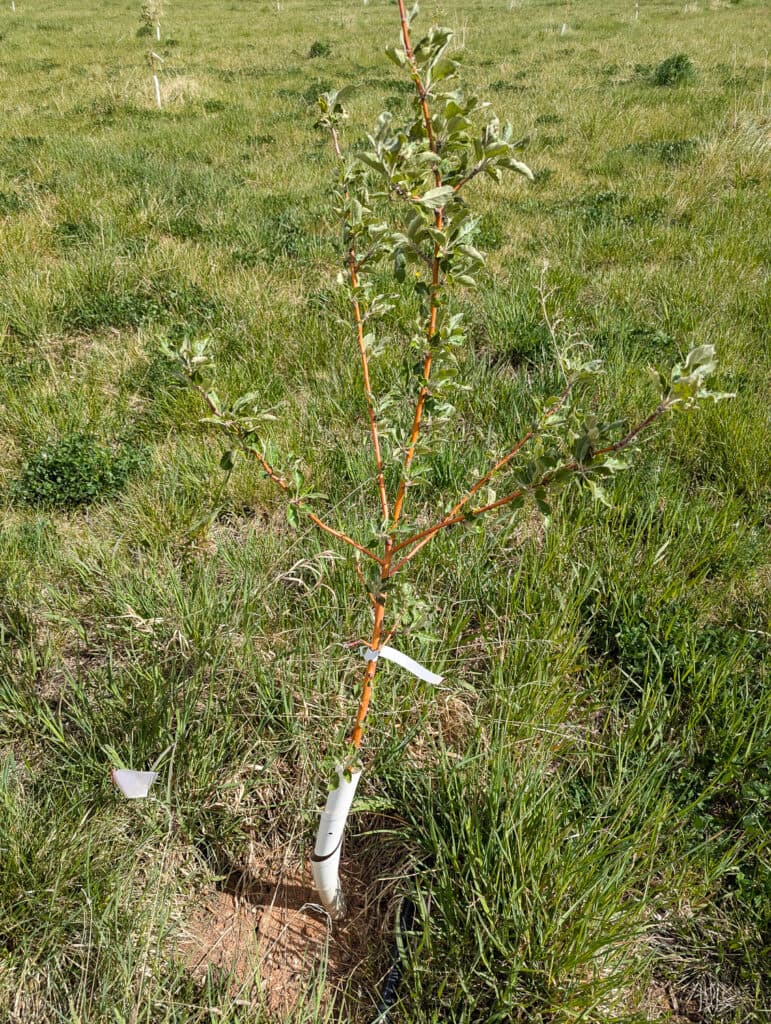
While many cideries choose to package their product in cans, the Haykins opt for large format bottles like one would find with wine. Yes, their products are more expensive. But the cidermaking and winemaking processes are nearly identical. Making both takes much longer and is more expensive than brewing beer. And many cidermakers argue that when you put it in the can, consumers expect to pay beer prices, not higher ones. That makes it harder for cideries to make ends meet.
“Cidermaking is winemaking,” Haykin said. “And wine that is made well can command a much higher price. I want to elevate apples the same way winemakers elevate wine grapes. That way everybody can get paid in the apple world in a way that they could not possibly otherwise. If I can sell a high-end bottle of cider to compete with a high-end bottle of wine, I can pay my farmer much more for the fruit. I can give my employees health insurance. I can give my employees health insurance. It creates a completely different financial reality — one that makes it possible to truly value the fruit and the people behind it.”
Additionally, not all heirloom apples would do well as “eating apples.” They can be gawky and blemished. But that doesn’t matter when they are ground up, pressed, and found in a cider glass.
“Colorado fruit is exceptional but not well understood,” Haykin said. “We need more growers, especially on the Front Range, where people think it’s impossible to grow fruit. In the future, I would love to see more high-end Colorado farms that produce fruit for farmer’s markets and high-end cideries.”
Colorado is currently home to around 20 cideries, varying in size from large-scale productions to small backyard operations and everything in between. Many rely on Colorado fruit, whether bought from small farmers or foraged, to produce their cider. And as people start to look for drink options that have a naturally lower alcohol-by-volume, are gluten-free, and made with local ingredients, cider fits that demand perfectly.
The future of farming
It’s not just about growing the local economy. These apples also present a real opportunity to preserve Colorado’s agricultural land. According to one study, between 1992 and 2002, Colorado lost 2.89 million acres of agricultural land. And the state’s population has grown steadily since 2002, with much more land set aside for housing and other uses.
“Will growers be able to pass down land to future generations? Are they going to be able to take advantage of that opportunity? If they cannot, that farmland is not going to stay farmland, and our ability to grow the most unique, high-flavored crops on earth is going to go away because we are not farming,” Schuenemeyer said. “And that's stupid. I know that we cannot grow everything in Colorado. But there are things we can grow better than anyone on Earth, and it's just dumb for us not to do that.”
As it stands now, most of these orchards can only provide for local farmer’s markets and small cideries. But people like Ela, the Haykins, and the Schuenemeyers are working tirelessly to help more people see the potential of these apples.
“We cannot grow on the same massive scale as places like Washington State or China,” Schuenemeyer said. “But nobody else can do the quality level that we can. Consumers have a lot of power. If they start demanding more places carry Colorado-grown apples, we can make it happen. It's difficult, but it's not impossible.”





